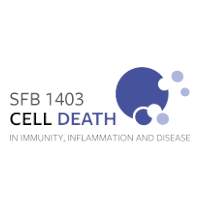Mitochondrial metabolism coordinates stage-specific repair processes in macrophages during wound healing
Abstract
Wound healing is a coordinated process that initially relies on pro-inflammatory macrophages, followed by a pro-resolution function of these cells. Changes in cellular metabolism likely dictate these distinct activities, but the nature of these changes has been unclear. Here, we profiled early- versus late-stage skin wound macrophages in mice at both the transcriptional and functional levels. We found that glycolytic metabolism in the early phase is not sufficient to ensure productive repair. Instead, by combining conditional disruption of the electron transport chain with deletion of mitochondrial aspartyl-tRNA synthetase, followed by single-cell sequencing analysis, we found that a subpopulation of early-stage wound macrophages are marked by mitochondrial ROS (mtROS) production and HIF1α stabilization, which ultimately drives a pro-angiogenic program essential for timely healing. In contrast, late-phase, pro-resolving wound macrophages are marked by IL-4Rα-mediated mitochondrial respiration and mitohormesis. Collectively, we identify changes in mitochondrial metabolism as a critical control mechanism for macrophage effector functions during wound healing.
Read more at Cell Metabolism 33,1–17
